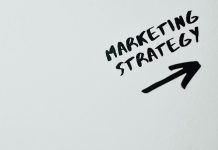Gone are the days when a business website functioned merely as a digital brochure. In today’s fast-moving online landscape, website design is no longer about simply displaying information. It’s about creating dynamic, conversion-optimized websites that actively drive results. Modern web design blends strategy, user psychology, and technology to shape a seamless web experience that engages visitors from the moment they land on the page.
For any small business or growing brand, the goal is clear: build a site that guides users smoothly toward action. That means prioritizing user experience (UX), intuitive website layout, fast loading speed, and responsive design across every device from desktops to mobile websites. When these elements come together, they form the foundation of an effective online presence.
In short, today’s most successful businesses treat website design as a performance-driven asset, not a passive placeholder.
1) Take Care of the Technical Parts First
A modern website can only perform as well as its technical foundation allows.
Speed
At the top of that foundation is speed, specifically loading speed and overall website speed. Search engines now treat speed as a direct ranking factor, and users expect pages to load instantly.
Even a one-second delay can hurt conversions and damage user engagement. To keep performance high, businesses should prioritize image compression, minimize unnecessary code, and implement effective caching. These simple but powerful adjustments ensure that every page, from landing pages to product galleries, loads fast and smoothly.
Security
Security is equally essential. HTTPS (Hypertext Transfer Protocol Secure) is no longer optional; it’s the baseline standard for protecting user data and establishing trust. Without it, visitors may abandon the site before engaging with any content, and browsers may flag the site as unsafe.
Scalability
Finally, scalability starts with choosing the right foundation. Whether you prefer robust CMS platforms, an intuitive website builder with a drag-and-drop interface, or all of these but with the help of professionals like Manwaring Web Solutions, the goal is the same: ensure ease of maintenance, efficient updates, and long-term flexibility.
The right system allows small businesses and growing brands to evolve their web design effortlessly as their needs and customer base expand.
2) Design for Everyone
Today’s users live on their phones, which makes mobile-first design the new standard in modern web design.
Mobile-first
Instead of treating mobile websites as an afterthought, businesses must begin the design process with small screens in mind. This approach ensures that key elements (e.g., navigation bars, call to action buttons, and content blocks) function flawlessly even on the most compact displays. Mobile-first also encourages cleaner layouts, faster loading speed, and a more intentional user experience from the start.
True cross-device UX
At the core of the mobile-first principle is responsive design, also known as responsive web design. This method allows a website’s layout, imagery, and components to automatically adapt to any device size (e.g., desktop, tablet, or mobile). A truly responsive approach enhances the overall customer experience by delivering consistency.
Visitors should be able to browse, scroll, and interact smoothly, whether they’re tapping with their thumbs or clicking with a mouse. This is why touch-friendly tap targets, readable text sizes, and generous spacing are essential. They prevent user frustration and make every interaction as intuitive as possible.
Performance
Performance is equally important in mobile optimization. Fast-loading, user friendly pages directly influence both engagement and search visibility. Google’s mobile-first indexing means that your mobile experience affects your SEO performance across the board.
When businesses prioritize speed, usability, and responsive design together, they create mobile experiences that feel effortless, ultimately strengthening trust, boosting conversions, and supporting long-term growth.
3) Pay Attention to Visuals and Layout
Effective website design isn’t just about making a site look good. It’s about understanding how people think, react, and navigate.
Purposeful design
User psychology plays a major role in shaping a visitor’s journey. By anticipating user needs and designing with purpose, businesses can guide attention, reduce friction, and naturally direct visitors toward desired actions. Immediate clarity is key: when users instantly understand where they are and what they can do, user engagement increases dramatically.
Visual hierarchy and aesthetics
Visual hierarchy is one of the most powerful tools in modern web design. Strategic use of white space helps highlight essential elements and prevents pages from feeling crowded or overwhelming. High-quality product photography and thoughtful visual aesthetics elevate professionalism, making users more confident in the brand. Additionally, organizing information in a card grid format helps visitors scan content quickly, improving the overall web experience.
Website layout and navigation
Website layout and navigation must follow familiar patterns to feel intuitive. Users expect the company logo in the upper left, a clear navigation bar at the top, and a predictable flow of information throughout each page. Meeting these expectations builds trust and reduces cognitive load. When visuals or data require illustration, simple graphical representation ensures clarity without distraction.
Together, these design principles create a layout that feels natural, approachable, and user friendly. By blending aesthetics with psychology, businesses can design experiences that not only look polished but guide visitors effortlessly toward action.
4) Drive Action
A high-performing website isn’t just visually appealing: it’s built to drive action.
Strong calls-to-action
At the center of the web design strategy is the call to action (CTA). CTAs must be designed with intention: strong color contrast ensures they stand out, while concise, compelling microcopy tells users exactly what will happen when they click.
Whether the goal is to ‘Get a Quote,’ ‘Start Free Trial,’ or ‘Book a Consultation,’ each CTA should guide visitors clearly through the web experience. Thoughtful placement (e.g., above the fold, repeated at logical points, and reinforced with visual hierarchy) ensures users always know their next step.
Key conversion pages
Conversion-focused website design also prioritizes optimizing key pages, especially landing pages. These pages should minimize distractions, remove unnecessary links, and focus entirely on the desired action. Clean layouts, short paragraphs, and clear value propositions help users absorb information quickly.
Contact forms, one of the most important conversion tools, should be designed for simplicity. Asking for only essential fields (name, email, and one or two specifics) reduces friction and increases completion rates. For small businesses, even subtle improvements to form design can significantly increase leads.
Unique interactive features
Interactive features can further enhance engagement when used sparingly. Micro-interactions, such as subtle button animations or hover effects, can make a site feel more polished without slowing it down. Lightweight calculators, sliders, or step-by-step prompts can also support user decision-making, especially on service-based landing pages. These elements should remain performance-friendly to preserve website speed and maintain a smooth user experience.
Ultimately, a conversion-focused strategy blends thoughtful design, purposeful content, and intuitive interactivity. When CTAs, landing pages, forms, and micro-interactions work together, businesses create a website that not only attracts visitors but turns them into customers.
5) Integrate the Business’s Digital Ecosystem
A modern website doesn’t stand alone. It operates at the center of a larger digital ecosystem.
Social media channels
To maximize reach and engagement, businesses must connect all their channels seamlessly. Subtle social media integration, such as clean icons placed in the footer, helps visitors explore additional touchpoints without overwhelming the design. Marketing tools, including lead capture pop-ups or newsletter sign-up fields, ensure that valuable traffic doesn’t go to waste.
Post-design strategies
Beyond design, your website should actively support ongoing campaigns. Whether you’re directing users from email campaigns, retargeting through Facebook ads, or promoting a new offer, your site becomes the destination where interest turns into action. Consistency in messaging and page layout reinforces trust and improves overall customer experience.
E-commerce
For businesses selling products or services online, ecommerce tools are essential. A well-structured store, paired with secure online payments, builds confidence and reduces friction during checkout.
When these components work together, your website becomes a powerful engine for sustainable growth, supporting marketing, sales, and customer success all in one place.
Conclusion
Modern website design succeeds when UX, speed, and mobile-first principles work together to create a seamless, user friendly experience. These pillars ensure that every visitor—on any device—can navigate smoothly, engage confidently, and take meaningful action. But effective web design isn’t a one-time project. It’s an ongoing commitment to refining layouts, improving website speed, enhancing mobile websites, and adapting to evolving user expectations.
For any small business, continuous improvement is the key to scaling a loyal customer base. By treating the website as a living, growing asset, businesses position themselves for long-term success in a competitive digital world.












































